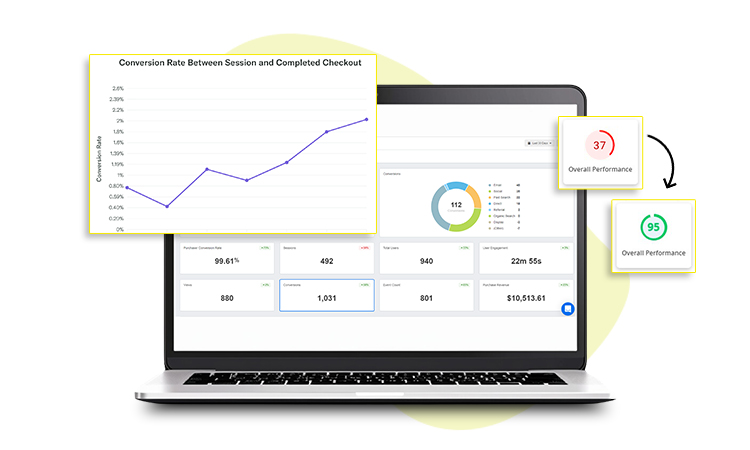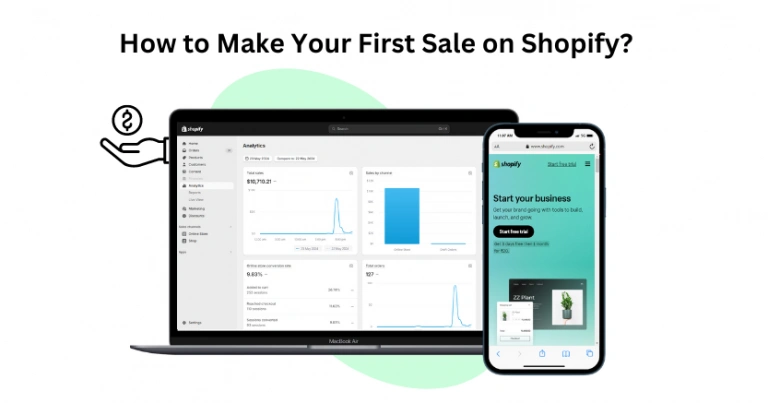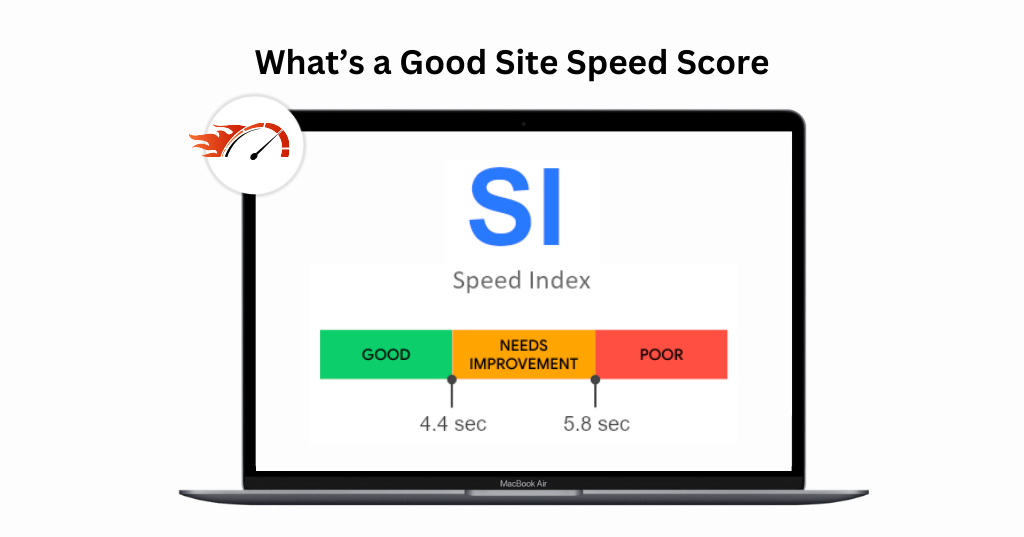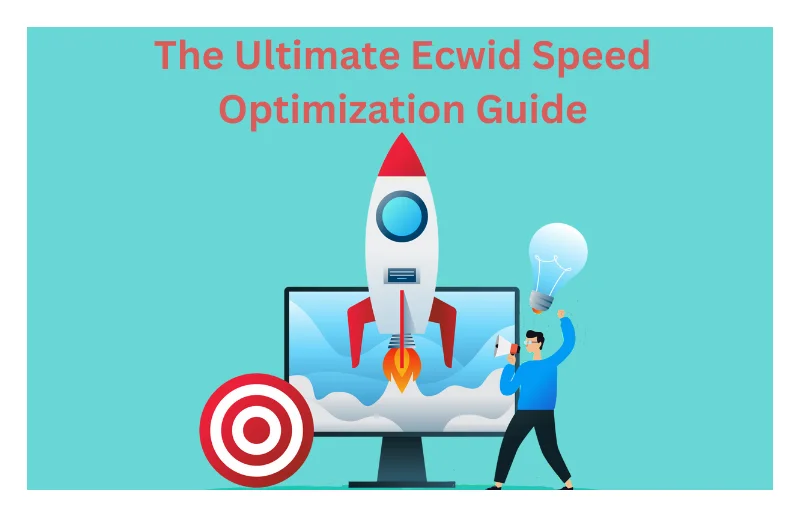Introduction
In today’s fast-paced digital world, your website speed and performance are powerful tools that can either make or break your business. Imagine customers who want to get your services, or products click your website and are met with sluggish load times and clunky navigation. Frustrating, right?
In fact, research shows that even a one-second delay in page load time can lead to a significant drop in conversions. So, how can you ensure your website is not only visually appealing but also optimized for speed and performance?
Here, we will understand the relationship between page speed and conversion rates and learn the best practices for boosting website speed to enhance customer experience. First, let’s understand what website or page load time is and how crucial it is.
What is Page Loading Time and Why It Matters?
Website or page loading time refers to the duration it takes for a web page to fully display its content after a user initiates a request. This includes the time taken to load HTML, JavaScript, CSS, images, and other resources.
Why Does It Matter?
- User Experience: Fast loading times enhance user experience. Various studies reveal that users expect web pages to load within two seconds or less. If a site takes too long, visitors become frustrated and leave.
- Bounce Rate: Slower loading times contribute to higher bounce rates. If users encounter delays, they abandon the page, which leads to lost potential conversions or sales.
- SEO Ranking: Search engines, like Google, consider page speed as a ranking factor. Faster websites have more chances to appear higher in search results, improving visibility and attracting more organic traffic.
- Mobile Performance: With the rise of mobile browsing, optimizing loading times for mobile users is crucial. Slow-loading pages can significantly hinder user engagement on smartphones and tablets.
- Conversion Rates: Faster loading times lead to improved conversion rates and lower bounce rates. Studies indicate that even a one-second delay can reduce conversions by a significant percentage, impacting overall business revenue.
- Competitive Advantage: In competitive markets, a fast-loading website can distinguish a business or services from its competitors. Users are more likely to choose a site that offers a quick and seamless experience.
Know The Factors That Affect Your Website’s Speed
Website speed is necessary to improve the user experience and get visibility in the search engine result pages. There are various factors that can significantly impact how quickly your site loads. Some of these factors are –
1. Hosting Provider: The quality of your hosting service has an integral role in improving website loading time and speed. Shared hosting can slow down your site due to limited resources, while dedicated or VPS hosting delivers better performance.
2. File Sizes and Formats: Large images, videos, and files can drastically slow down load times. Consider optimizing file sizes by using appropriate formats (like JPEG for images and MP4 for videos) that can boost website speed.
3. Number of HTTP Requests: Each element on a webpage, including images, scripts, stylesheets, etc., requires an HTTP request. A high number of requests can lead to slower load times.
4. Code Quality: Clean, well-structured code can significantly improve website load times. Excessive use of plugins can bloat your code and slow down performance.
5. Browser Caching: Caching allows browsers to store certain elements of your website so they don’t need to be reloaded on subsequent visits. Implementing browser caching can drastically decrease load times for returning visitors.
6. Redirects: Excessive redirects can create additional HTTP requests and increase load times. Each redirect adds latency, so it is essential to minimize them wherever possible.
7. Mobile Optimization: With an increasing number of users accessing the web via mobile devices, ensuring your site is optimized for mobile is essential. Responsive design and mobile-specific optimizations (like lazy loading images) can improve load times for mobile users.
What is Google’s Opinion on Page Loading Time?
Google emphasizes that page loading time is crucial for both user experience and search rankings. Faster-loading pages reduce bounce rates and offer higher engagement, which are important factors for SEO.
Google uses metrics like Core Web Vitals to evaluate loading performance, interactivity, and visual stability. Improving page speed can enhance user satisfaction and potentially boost your site’s ranking in search results. Hence, optimizing page loading time is seen as a key component of a successful web strategy.
Increase Your Website Conversion with Website Speedy
Click Here To Boost ConversionStatistics That Show How Page Speed Affects Your Conversions
The following statistics show how a slow-loading page speed can significantly affect your rankings and conversions in different ways.
1. Bounce Rate: A 1-second delay in page load time can increase bounce rates by up to 32%. Faster pages keep users engaged.
2. Conversion Rate: Websites that load in under 2 seconds see conversion rates increase by 64% compared to those that take 5 seconds or more.
3. User Experience: 53% of mobile users will abandon a site that takes longer than 3 seconds to load, leading to lost potential conversions.
4. Revenue Impact: Amazon reported that a 100-millisecond increase in page load time could decrease sales by 1%.
5. Mobile Users: 70% of mobile users say that page speed impacts their willingness to return to a site.
6. Search Engine Rankings: Google considers page speed as a ranking factor; faster sites rank better, leading to more traffic and higher conversion potential.
7. Ad Revenue: Publishers can lose up to 7% of ad revenue for every added second of load time.
8. User Retention: 47% of consumers expect a web page to load in 2 seconds or less; delays can lead to a significant drop in repeat visits.
9. Desktop vs. Mobile: While desktop users may tolerate slightly longer load times, 74% of mobile users expect a site to load in under 5 seconds.
10. Overall Satisfaction: A survey found that 79% of online shoppers who experience performance issues are less likely to return to the site.
Why is Page Speed Important on your Squarespace Website?
Page loading time is crucial for your Squarespace speed optimization for several reasons, impacting both user experience and SEO.
1. A fast-loading website keeps visitors engaged. Research shows that users expect pages to load within a few seconds; if a site takes too long, they are likely to leave. A slow site can frustrate users, leading to higher bounce rates and lower retention. This means fewer potential customers or clients, which can directly affect your business.
2. Search engine optimization (SEO) heavily factors in page speed. Google considers site speed to be a ranking factor, meaning faster websites are more likely to appear higher in search results. If your Squarespace site is sluggish, you may miss out on valuable organic traffic. A well-optimized site not only loads quicker but also enhances your credibility, making visitors more likely to trust your content.
3. With an increasing number of users accessing websites via mobile devices, ensuring your Squarespace site loads quickly on these platforms is essential. A responsive and speedy mobile experience can significantly improve user satisfaction and engagement.
Thus, Squarespace website speed optimization enhances user experience, boosts website speed, improves SEO rankings, and ensures mobile users have a seamless experience. Using precise optimization strategies can lead to better performance, increased traffic, and higher conversion rates.

Want to read this blog offline?
No worries, download the PDF version
now and enjoy your reading later…
 Download PDF
Download PDF Website Speedy – A Tool For Squarespace Speed Optimization
Website Speedy is an essential tool for optimizing Squarespace sites, ensuring they load quickly and efficiently. The tool is easy to use and can be integrated into the website without any coding to improve its performance and conversion rates.
By implementing the right strategies, such as lazy loading, render blocking, etc., Website Speedy helps improve user experience and SEO rankings. Whether you are a small business owner or a designer, our website speed optimization tool empowers you to create a faster and more responsive Squarespace site. It helps increase engagement and your business growth.
Conclusion
As we have explored, even minor delays in loading times can lead to significant losses in engagement and sales. Optimizing your site for speed is essential, especially on platforms like Squarespace, where user expectations are high. Tools like Website Speedy can help you implement effective strategies to enhance performance and ensure a seamless experience for visitors.
By prioritizing page speed, you not only improve user satisfaction but also increase your chances of ranking higher in search results. A fast and well-optimized website can set your business apart from the competition, driving more traffic and conversions.
Frequently Asked Questions
Q1. How does page speed affect conversion rate?
A. Faster page speed leads to higher conversion rates, as users are less likely to abandon a site that loads quickly. A delay of just a few seconds can significantly increase bounce rates and reduce purchases.
Q2. How much does page speed affect ranking?
A. Page speed is a crucial ranking element for search engines like Google. Faster-loading pages tend to rank higher as they provide a better user experience.
Q3. Does page speed affect CPC?
A. Yes, page speed can impact Cost Per Click (CPC). Ads on faster sites may have higher quality scores, leading to lower CPC and better ad placements.
Q4. What slows down page speed?
A. Common factors include large image files, unoptimized code (CSS/JavaScript), excessive third-party scripts, and server response times.
Q5. How is page speed calculated?
A. Page speed is measured using metrics like Time to First Byte (TTFB), First Contentful Paint (FCP), and fully loaded time. They can be assessed through tools like Google PageSpeed Insights or GTmetrix.















































